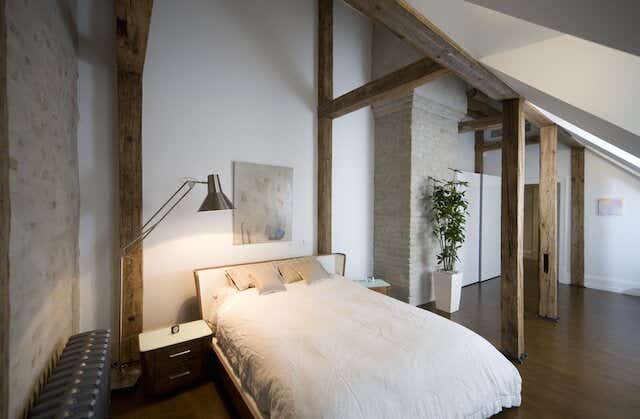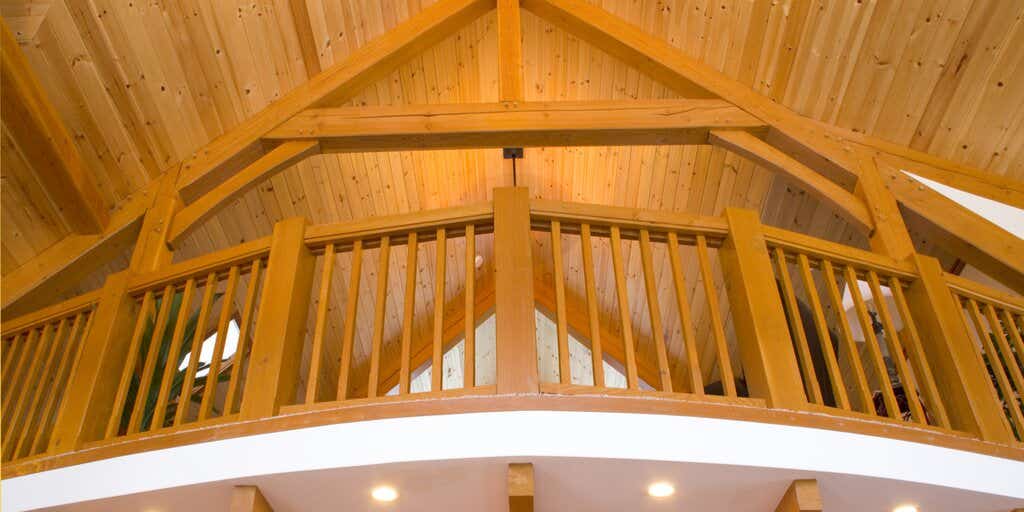Finding an insurance policy for your timber framed house may be more of a challenge than getting an insurance quote for a traditional bricks and mortar home.
There are, however, specialist insurers who can help you get the best quote for your timber framed house insurance.
Finding insurance for your timber framed house
Owners of timber frame houses face different challenges when looking for insurance, because their homes have features which don’t always fit with normal insurance criteria. This is why a non-standard home insurance provider may be better placed to help you with the right cover.
If your house is primarily made of wood and timber, a traditional insurer may be reluctant to offer you insurance cover. However, there are specialist insurers who understand the needs of owners of timber framed houses, and who may be able to give you a more competitive insurance quote instead.
What makes timber framed house insurance special?
Many timber framed homes are individual and unique and therefore don’t fit the standard criteria set out by many insurance companies.
Timber framed houses have always been popular but modern-day insurers can often be reluctant to treat your property in the same way as a bricks and mortar home.
Traditional Tudor and old barn conversions, cottages and even some newer eco homes might have been made primarily with timber.
Although timber framed homes can be just as durable as bricks and mortar houses, not all insurers are prepared to cover them with an insurance policy. Yet as the homeowner you will want to find a good home insurance policy that will cover all risks including fire, damage by water, flood or storm, and any problems with subsidence.

Many insurers may be reluctant to take on the risk of a timber framed house and so simply turn down your request for a quote based on the construction of your house. This is because they may regard timber framed houses as more likely to suffer insurance claims such as damage by fire, wood rot and decay and problems with damp. They may also be concerned about the expense of maintaining the property and potential problems in sourcing replacement wood timbers.
Read our guide to learn more about how to insure your timber framed home for less, and use the link below to compare non-standard timber frame house insurance.
Why buy a timber framed house?
Timber framed homes are aesthetically pleasing to look at and can be cheap to build and heat. They can also be eco-friendly and designed to be built quickly and cheaply. Modern timber-framed homes are especially popular in the countryside and at the seaside.
Timber framed home insurance and listed buildings
Older timber framed homes may have historic value and be listed. A building is listed when it's considered to be of special architectural or historic interest and needs to be protecting. Listed buildings are included on the National Heritage List for England. They could be either Grade 1 listed, which make up around 2.5% of all listed buildings and means they are of the highest historical significance. Or they may be Grade 2 listed, which make up 92% of listings on the National Heritage list for England.
If you live in or own a listed building then there are rules about what changes you can make to the inside and outside. It's likely you will have to apply for Listed Building Consent for any work that you want to carry out.
Generally speaking, if you own a building that was constructed before 1700, it's likely to be listed. Most buildings that date from between 1700 and 1850 are also likely to be listed.
What are the risks with timber framed houses?
With homes that are predominantly made from wood, there is the increased risk of fire, wet or dry rot, condensation and cracks in the timber.
In terms of fire risk, your insurer may wish to carry out a risk assessment before going ahead with a timber framed house insurance policy, and this might include asking you to install a proper fire alarm and sprinkler system in your house.
When it comes to internal problems with the wooden structure, it is very important to ensure that your timber framed house is properly and professionally maintained, and that you regularly inspect the wood for problems, cracks, insects or damage.
Timber framed houses and non-standard insurance
Due to the nature of the material, standard insurance providers see timber framed houses as possessing bigger risks than standard bricks and mortar properties.
Non-standard home insurance is a type of cover often provided by specialist insurers with expertise in non-standard elements, such as subsidence and timber frame houses.
Their experience and expertise can often result in cheaper insurance policies than with standard insurers – that is if you're able to get your timber framed property covered by a standard insurance provider in the first place.
Timber frame house insurance
Timber frame house insurance will be specially designed to your home's requirements, but there are some things you can do to help your chances of getting the best cover for you at a reasonable price.
Fire prevention methods, such as an extinguisher and obviously a smoke alarm, may be required in order to get your insurance application approved and could help bring the price down. That is because insurers will be concerned that if a home with a wooden structure were to catch fire, the fire would spread more rapidly than in a traditional house and would do more damage and be more difficult to control and stop. You may also need to install a specialist sprinkler system.
You may also struggle to find fully comprehensive insurance, even of the non-standard variety, if your property does not have foundations supporting it. Many older homes were not built to the same specifications as modern houses and may not have the deep foundations that modern planning laws and rules require.
This could mean that cover against subsidence and heave could be excluded in the package of insurance that you are offered for your timber framed home. Subsidence home insurance is important as the cost of remedying the problem is likely to be very high if there are issues around slippage or subsidence.
Read more …

